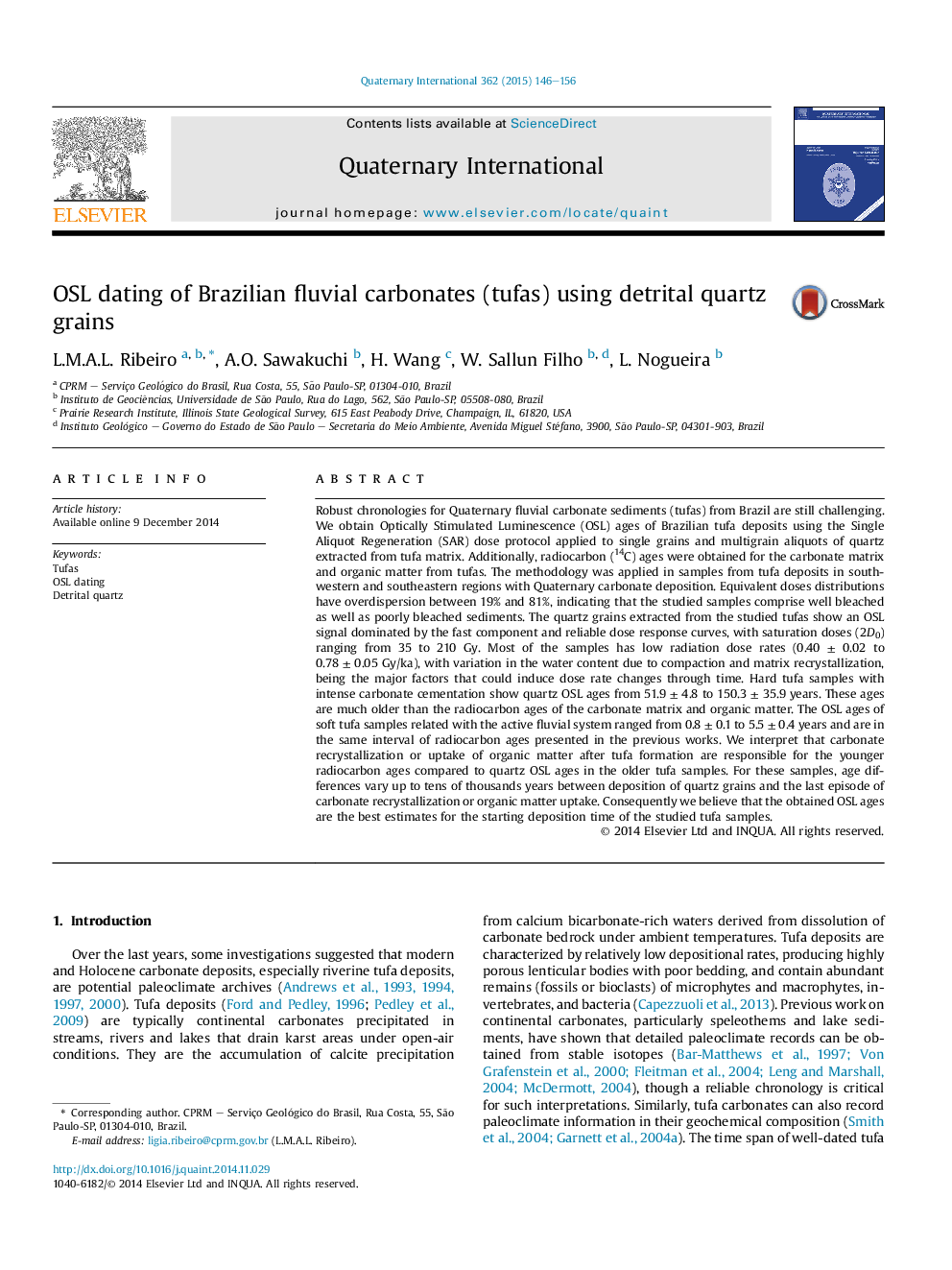| کد مقاله | کد نشریه | سال انتشار | مقاله انگلیسی | نسخه تمام متن |
|---|---|---|---|---|
| 1040849 | 1484135 | 2015 | 11 صفحه PDF | دانلود رایگان |

Robust chronologies for Quaternary fluvial carbonate sediments (tufas) from Brazil are still challenging. We obtain Optically Stimulated Luminescence (OSL) ages of Brazilian tufa deposits using the Single Aliquot Regeneration (SAR) dose protocol applied to single grains and multigrain aliquots of quartz extracted from tufa matrix. Additionally, radiocarbon (14C) ages were obtained for the carbonate matrix and organic matter from tufas. The methodology was applied in samples from tufa deposits in southwestern and southeastern regions with Quaternary carbonate deposition. Equivalent doses distributions have overdispersion between 19% and 81%, indicating that the studied samples comprise well bleached as well as poorly bleached sediments. The quartz grains extracted from the studied tufas show an OSL signal dominated by the fast component and reliable dose response curves, with saturation doses (2D0) ranging from 35 to 210 Gy. Most of the samples has low radiation dose rates (0.40 ± 0.02 to 0.78 ± 0.05 Gy/ka), with variation in the water content due to compaction and matrix recrystallization, being the major factors that could induce dose rate changes through time. Hard tufa samples with intense carbonate cementation show quartz OSL ages from 51.9 ± 4.8 to 150.3 ± 35.9 years. These ages are much older than the radiocarbon ages of the carbonate matrix and organic matter. The OSL ages of soft tufa samples related with the active fluvial system ranged from 0.8 ± 0.1 to 5.5 ± 0.4 years and are in the same interval of radiocarbon ages presented in the previous works. We interpret that carbonate recrystallization or uptake of organic matter after tufa formation are responsible for the younger radiocarbon ages compared to quartz OSL ages in the older tufa samples. For these samples, age differences vary up to tens of thousands years between deposition of quartz grains and the last episode of carbonate recrystallization or organic matter uptake. Consequently we believe that the obtained OSL ages are the best estimates for the starting deposition time of the studied tufa samples.
Journal: Quaternary International - Volume 362, 19 March 2015, Pages 146–156